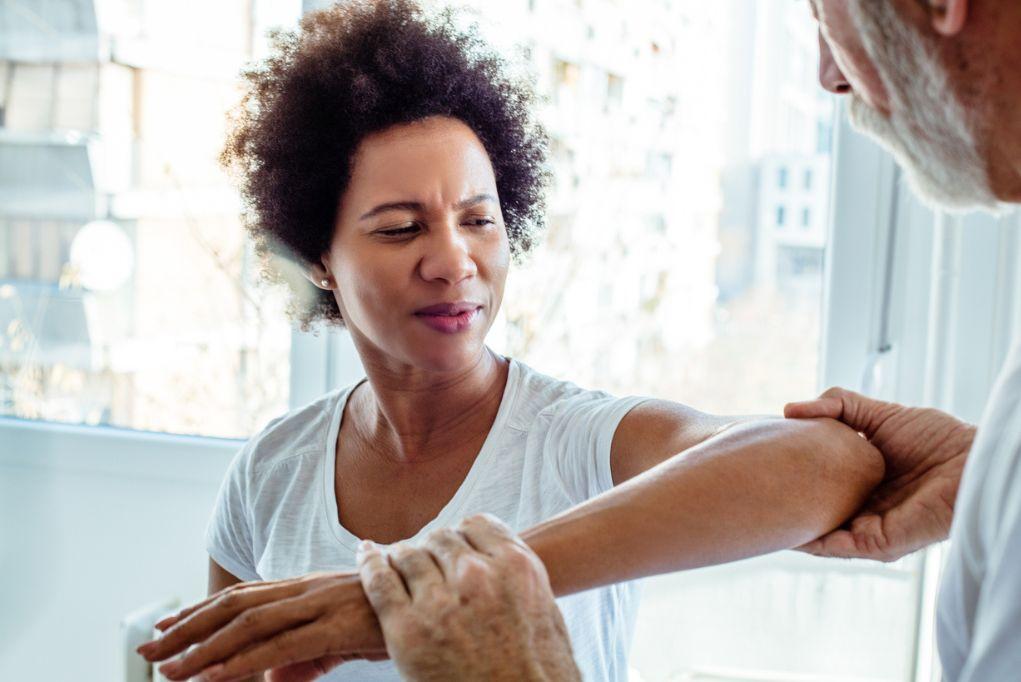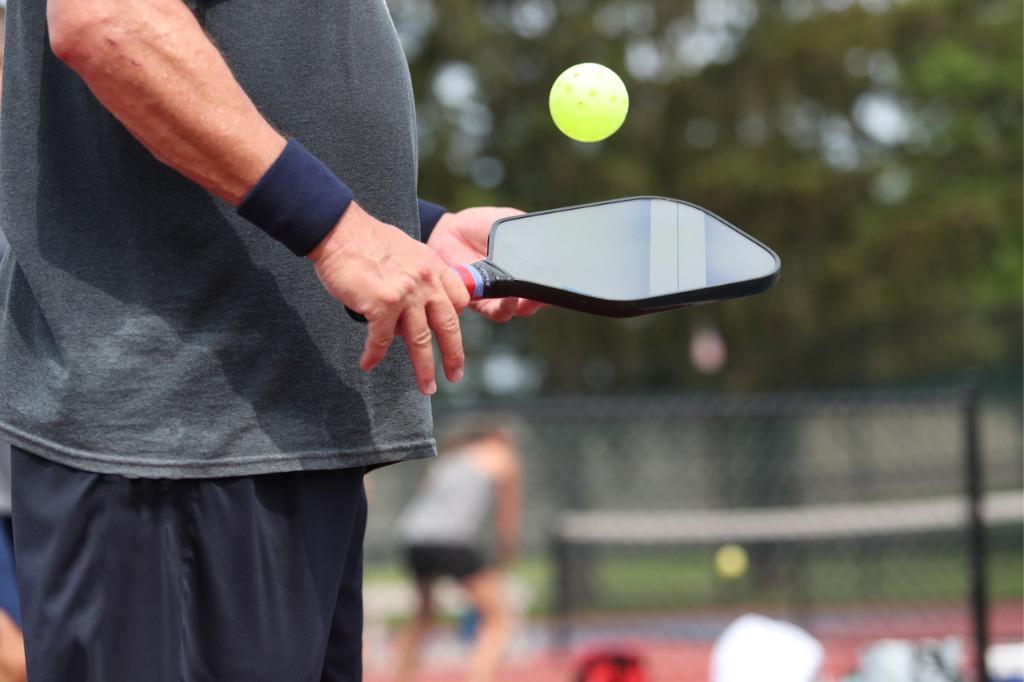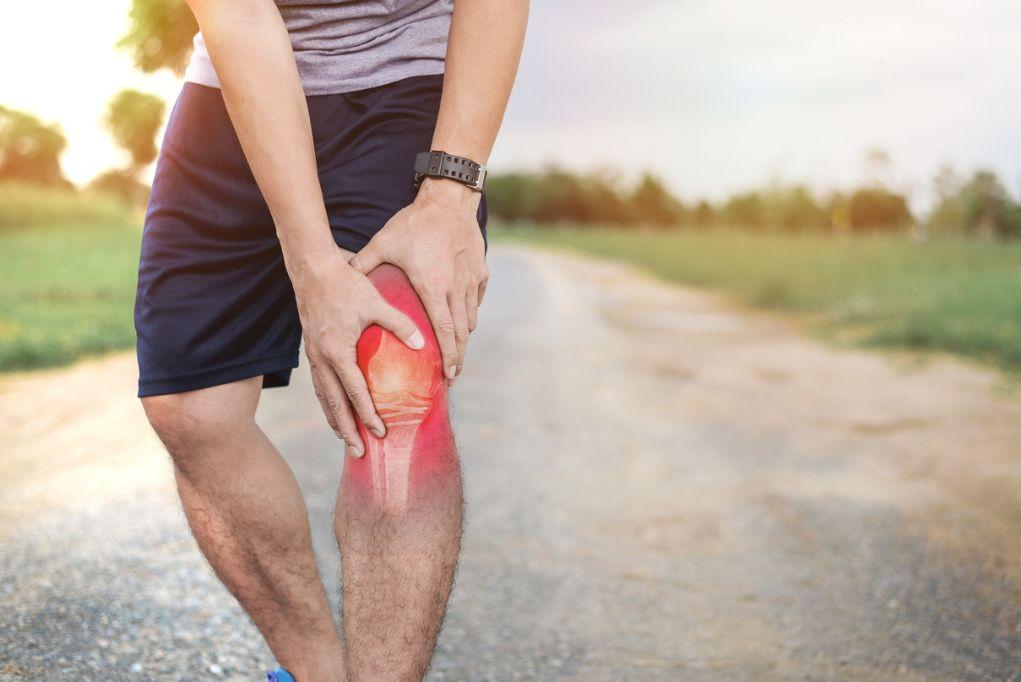Why You Might Have a Swollen Elbow (and How to Treat It)
Waking up with a swollen elbow or noticing it after a fall or long day at work can be alarming. Sometimes the swelling is painless and just looks unusual; other times it’s paired with stiffness, discomfort, or tenderness that makes daily tasks difficult. While elbow swelling is common, the cause can vary widely, from something as simple as leaning on your elbow too much to a more serious injury or condition.

What Does It Mean When Your Elbow Is Swollen?
The elbow is a complex hinge joint made up of bones, cartilage, ligaments, and fluid-filled sacs called bursae. Swelling occurs when fluid builds up in or around the joint due to irritation, inflammation, or injury. The location and severity of swelling often provide clues about the underlying cause.
Common Causes of a Swollen Elbow
1. Elbow Bursitis (Olecranon Bursitis)
One of the most common causes of a swollen elbow is bursitis or inflammation of the olecranon bursa, which is a small fluid-filled sac at the tip of the elbow. This condition is sometimes called “student’s elbow” because it can come from frequent leaning on hard surfaces.
Signs of Bursitis:
- Noticeable, soft swelling directly at the back of the elbow
- May or may not be painful
- Warmth and redness if an infection is involved
2. Elbow Injury (Sprains, Strains, or Fractures)
Falls, sports injuries, or accidents can lead to trauma around the elbow. Even minor injuries can cause swelling as the body sends fluid to protect the joint. More serious injuries, like fractures, often come with significant pain, bruising, or deformity.
Signs of Elbow Injury:
- Swelling soon after injury
- Bruising or limited range of motion
- Pain with movement or when pressing on the joint
3. Gout or Arthritis
Both gout (a buildup of uric acid crystals in the joint) and osteoarthritis can lead to swelling, stiffness, and tenderness in the elbow. Rheumatoid arthritis, an autoimmune condition, can also cause swelling as part of the body’s inflammatory response.
Signs of Gout or Arthritis:
- Swelling with persistent stiffness or aching
- Pain that comes and goes, or flares up suddenly (gout)
- Possible warmth and redness
4. Infection
A swollen elbow can sometimes be the result of an infection, especially if it’s red, warm, and painful. This requires prompt medical attention. Infection can develop from a cut or scrape near the elbow or from bacteria entering the bursa.
Signs of Infection:
- Redness, warmth, and tenderness
- Fever or chills in more serious cases
- Swelling that worsens quickly
5. Overuse or Repetitive Stress
Athletes, construction workers, or anyone with repetitive arm movements may experience swelling from overuse. Conditions like tennis elbow or golfer’s elbow don’t usually cause visible swelling right at the joint, but they can contribute to inflammation and discomfort that feels like swelling.
Signs of Overuse:
- Aching or tenderness around the elbow
- Pain during repetitive motions like lifting, gripping, or throwing
- Mild swelling in chronic cases
When to Worry About a Swollen Elbow
Not all swelling needs urgent treatment. However, you should see a doctor if:
- Swelling appears suddenly after a fall or injury
- The elbow is red, hot, and/or very tender (possible infection)
- You can’t fully move the joint or straighten your arm
- You have severe pain or notice deformity
- Swelling doesn’t improve after a few days of home care
Prompt diagnosis can prevent complications, especially if the cause is an infection, fracture, or gout flare.
Treatment Options for a Swollen Elbow
The treatment for a swollen elbow depends on the cause, but common approaches include:
Home Remedies (for mild cases)
- Rest: Avoid leaning on or overusing the elbow.
- Ice: Apply for 15–20 minutes at a time to reduce swelling.
- Compression: Use a soft wrap or elbow sleeve to support the joint.
- Elevation: Keep your elbow raised to reduce fluid buildup.
Medical Treatment
- Anti-inflammatory medications (NSAIDs) for pain and swelling
- Draining fluid from the bursa if swelling is significant
- Cortisone injections to reduce inflammation in bursitis or arthritis
- Antibiotics if infection is present
- Surgery in rare cases for recurring or severe bursitis or fractures
Preventing Elbow Swelling
- Use elbow pads if your job or sport involves leaning on hard surfaces.
- Take breaks from repetitive motions.
- Warm up and stretch before athletic activity.
- Stay hydrated and maintain a balanced diet to reduce gout risk.
When to See an Orthopedic Specialist
If swelling doesn’t improve in a few days, is accompanied by severe pain, or seems to keep coming back, an orthopedic evaluation is the best step forward.
At Motion Orthopaedics, we can help pinpoint the cause with a physical exam and imaging, then tailor treatment to get you back to full function, whether it’s rest and therapy, injections, or more advanced care.
Meet Our Elbow Specialists
- Nathan Mall, MD, CIME
- Luke Choi, MD
- Timothy Farley, MD
- Jason Young, MD
- Jason Browdy, MD
- David J. King, MD
Find Relief for a Swollen Elbow with Motion Orthopaedics
A swollen elbow can be just an inconvenience, or it could be a sign of something more serious. Don’t ignore persistent swelling, especially if it comes with pain or limited mobility.
At Motion Orthopaedics, our team specializes in diagnosing and treating elbow injuries and conditions with personalized care. Whether you need conservative management or advanced treatment, we’re here to help you recover quickly and safely.
Contact us today to schedule an appointment and find relief from elbow swelling.




